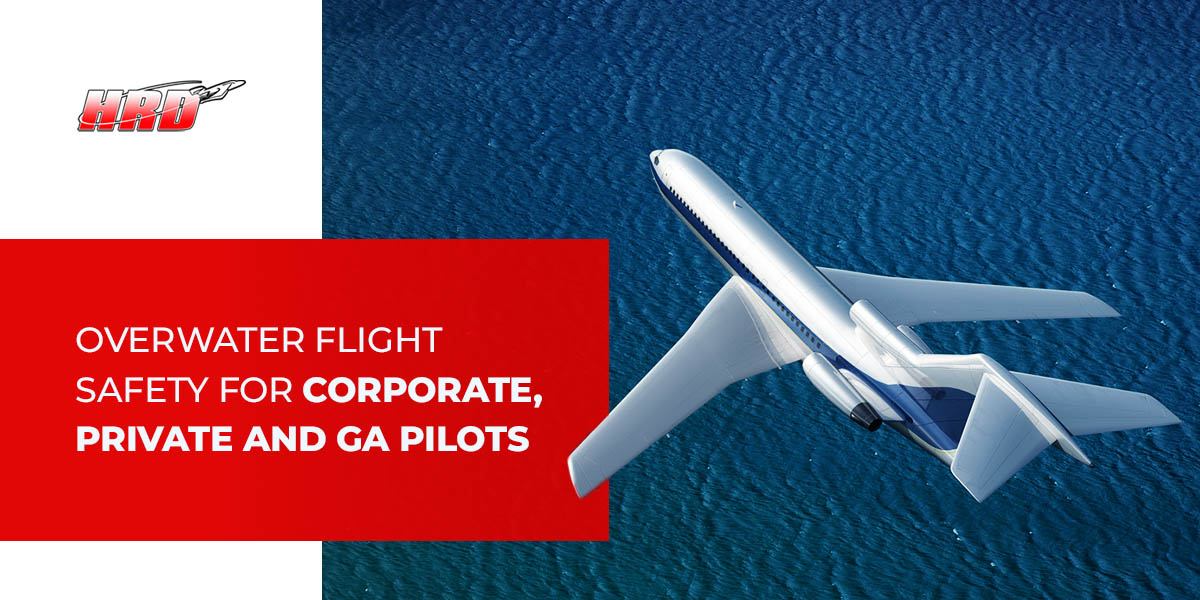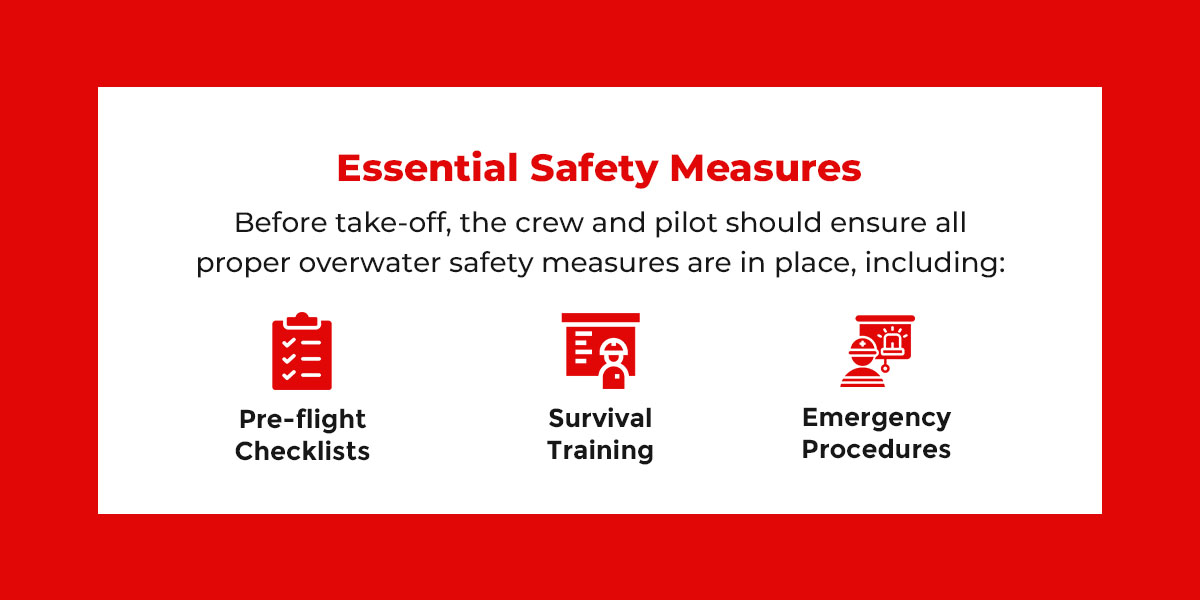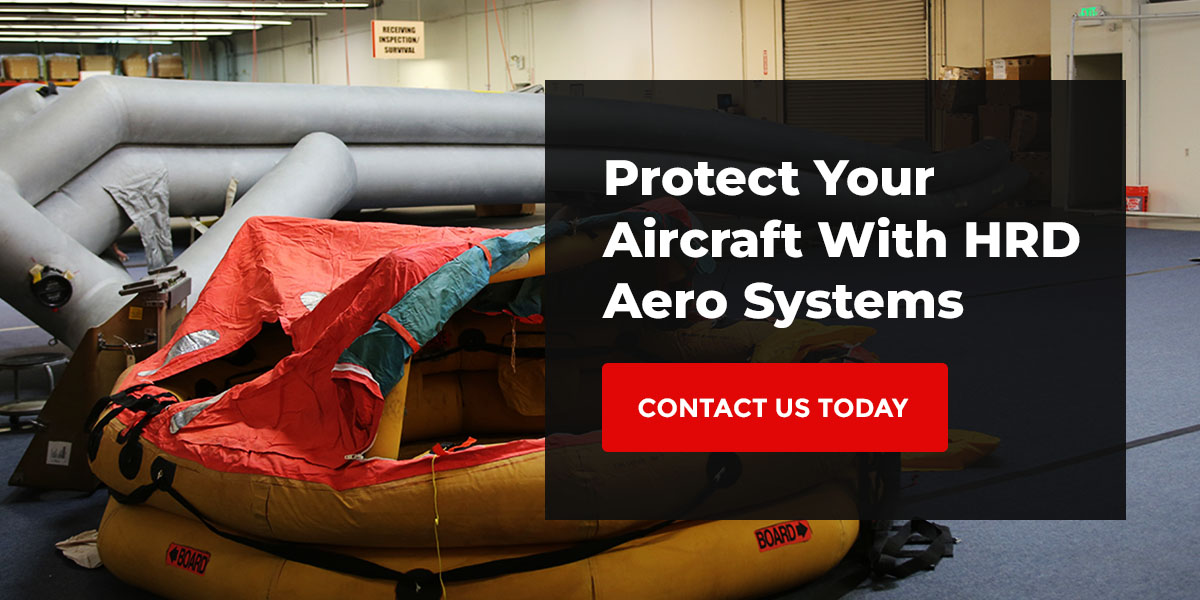
Flying over water comes with unique risks that all pilots must be aware of. Large bodies of water make it necessary to prepare for emergency scenarios ahead of time, such as alternate routes or potential emergency landing sites. With the right preparation, you can be ready for anything on your next overwater flight.
Flying Over Water as a Private Pilot
Flying over water means preparing for unique challenges and safety situations. Private, corporate or general aviation (GA) flights require thorough planning to account for overwater conditions and reach the final destination safely. When you fly overwater as a private pilot, make sure to consider:
- Planned and alternate routes: Account for any alternate airports or emergency landing areas along your route.
- Forecasted weather conditions: Determine what the weather will be like during the flight and make sure you receive regular weather updates mid-flight.
- Fuel range and availability: Ensure there are sufficient fuel reserves on board according to best practices.
- Communication protocols: Run checks of all communication systems and navigation aids to ensure they are functioning as expected.
- Search and rescue capabilities: Research the applicable search and rescue authorities along the flight path, including how pilots can alert these authorities in the event of an emergency.
Taking these considerations into account can help protect all passengers during overwater flights. Ensure your crew is ready for anything with proper overwater flight preparation.
Overwater Flight Risks
Before flying over water, it’s critical to be aware of all potential risks and take steps to mitigate those risks, ensuring a safe, successful journey and arrival at your destination.
Here are some overwater flight risks that GA, private and corporate pilots may encounter:
- Unpredictable weather: Dangerous conditions like storms, high winds and low visibility can appear rapidly over water. Pilots must watch the weather in advance and continue monitoring the forecast while flying over water. If adverse weather conditions become unsafe, pilots may need to adjust their flight plans on short notice.
- Limited landing sites: When flying over land, it’s easier to locate an emergency landing site. Overwater flights usually have limited options since emergency landing areas like alternate airports are less common.
- Equipment failure: Equipment failure during overwater flights poses a serious risk. Before the flight, pilots must conduct thorough equipment checks as well as check for emergency supplies and redundancies.
- Lack of landmarks: Overwater flights do not have the same landmarks that are available while flying over land. Before a flight over water, pilots should test their navigation equipment and other systems to ensure they stay on course during the flight.
- Communication challenges: It’s important to keep lines of communication open with air traffic control and other aircraft during any flight, including over water. Flying over large bodies of water creates additional communication challenges, especially when flying at lower altitudes and in remote areas.

Essential Safety Measures
Before take-off, the crew and pilot should ensure all proper overwater safety measures are in place, including:
- Pre-flight checklists: Checklists should include verifying navigation and communication equipment functionality, reviewing weather forecasts, checking emergency equipment and identifying alternate routes. A comprehensive pre-flight checklist helps reduce risks and gets the crew prepared for any emergency.
- Survival training: Flight crews should be prepared with training and certified emergency equipment. They should know how to use emergency signaling devices, life rafts and personal floatation devices.
- Emergency procedures: Overwater flights should have clear emergency procedures in place as part of the flight plan. Pilots should know all emergency scenarios like engine failure, water landing and loss of communication. Maintaining a regular drill schedule can help the crew train for these situations, increasing their ability to respond during a real emergency.
Do You Need Aircraft Rafts?
The Federal Aviation Administration (FAA) requires your aircraft to have life rafts for all passengers and a life vest for every person on board. Understanding flight overwater requirements and life raft sizing, specifications and features is crucial. While rare, overwater flight emergencies could leave pilots, crew and passengers in the water for an extended period of time — you must have the right safety equipment, including life rafts.
All private pilots must consider these factors related to life rafts:
- Specifications: Raft capacity, material durability and inflation method can affect the raft you choose. Look for rafts that can withstand prolonged use to ensure they can keep crew and passengers safe during an emergency.
- Sizing: Life rafts must be large enough to hold all passengers safely. Rafts must also be able to hold emergency equipment, so consider this when obtaining life rafts for your aircraft.
- Additional features: Remember that every raft needs one pyrotechnic signaling device and one portable, water-resistant, self-buoyant emergency radio signaling device. You should also look at features like weather resistance, stability, covers, boarding ramps, visibility and storage.
Recertifying Life Rafts
Even if your aircraft’s current life rafts have never been used in an emergency, they still require regular maintenance. Life rafts and their components come with recertification stickers so you know when it’s time to recertify your life raft. Recertification stickers can range from one to several years depending on the specific raft and manufacturer, so check yours to ensure you’re staying compliant.
While trusted companies like Winslow and EAM produce high-quality life rafts with long life spans, they still need recertification from a reputable service provider. During this process, the raft undergoes inspections, testing and maintenance to verify its function and quality.
The life raft recertification process typically involves a careful review of all components, including the inflation cylinder, pressure relief valves and air chambers. Having your life rafts inspected is a critical part of private aircraft safety.
Protect Your Aircraft With HRD Aero Systems
HRD Aero Systems is an expert in aerospace repair with decades of industry experience and an unmatched commitment to customer service. With our many certifications — including from the FAA, Department of Transportation (DOT) and European Union Aviation Safety Agency (EASA) — you can count on us to put safety first every time. When you choose our aircraft inflatable equipment services, you can make sure your aircraft’s safety equipment is ready for any emergency.
Contact us for life raft inspections and services as well as other services and supplies. We also offer emergency aircraft on ground (AOG) services to help your team be ready for anything.
Experience the HRD difference with our range of services — connect with our team today!

